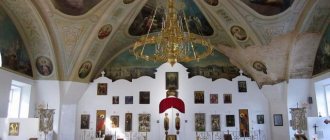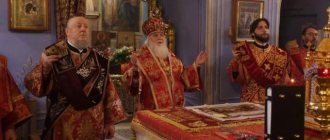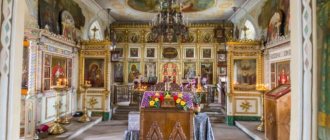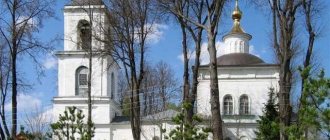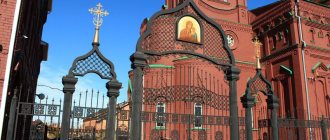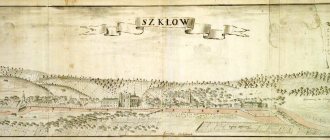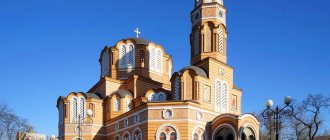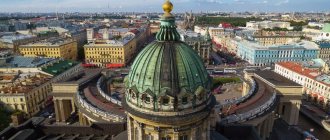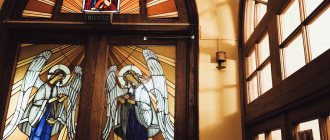Mir
Russia Rostov region Rostov-on-Don St. Kazan Church (Rostov-on-Don) Map is loading…
{"format":"leaflet","minzoom":false,"maxzoom":false,"limit":50,"offset":0,"link":"all","sort":[""], "order":[],"headers":"show","mainlabel":"","intro":"","outro":"","searchlabel":"\u2026 \u0441\u043b\u0435\ u0434\u0443\u044e\u0449\u0438\u0435 \u0440\u0435\u0437\u0443\u043b\u044c\u0442\u0430\u0442\u044b","default":"","import-annotation":false,"width ":"auto","height":"350px","centre":{"text":"","title":"""link":"""lat":47.29002100000000297086444334127008914947509765625,"lon": 39.71560600000000107456799014471471309661865234375,"icon":""},"title":"","label":"","icon":"","lines":[],"polygons":[],"circles":[ ],"rectangles":[],"copycoords":false,"static":false,"zoom":8,"defzoom":14,"layers":["OpenStreetMap"],"image layers":[] ,"overlays":[],"resizable":false,"fullscreen":true,"scrollwheelzoom":true,"cluster":false,"clustermaxzoom":9,"clusterzoomonclick":true,"clustermaxradius":80, "clusterspiderfy":true,"geojson":"","clicktarget":"","showtitle":true,"hidenamespace":false,"template":"","userparam":"","activeicon": "","pagelabel":false,"ajaxcoordproperty":"","ajaxquery":"","locations":[{"text":"\u003Cb\u003E\u003Ca href=\"/palomnik/%D0% A1%D0%B2%D1%8F%D1%82%D0%BE-%D0%9A%D0%B0%D0%B7%D0%B0%D0%BD%D1%81%D0%BA%D0%B8 %D0%B9_%D1%85%D1%80%D0%B0%D0%BC_(%D0%A0%D0%BE%D1%81%D1%82%D0%BE%D0%B2-%D0%BD %D0%B0-%D0%94%D0%BE%D0%BD%D1%83)\» title=\»\u0421\u0432\u044f\u0442\u043e-\u041a\u0430\u0437\u0430\u043d\ u0441\u043a\u0438\u0439 \u0445\u0440\u0430\u043c (\u0420\u043e\u0441\u0442\u043e\u0432-\u043d\u0430-\u0414\u043e\u043d\u0443) \»\u003E\u0421\ u0432\u044f\u0442\u043e-\u041a\u0430\u0437\u0430\u043d\u0441\u043a\u0438\u0439 \u0445\u0440\u0430\u043c (\u0420\u043e\u0441\u 0442\u043e\u0432-\u043d \u0430-\u0414\u043e\u043d\u0443)\u003C/a\u003E\u003C/b\u003E\u003Chr /\u003E\u003Ca href=\"/palomnik/%D0%A1%D0%B2%D0%BE %D0%B9%D1%81%D1%82%D0%B2%D0%BE:%D0%90%D0%BD%D0%BD%D0%BE%D1%82%D0%B0%D1%86% D0%B8%D1%8F\" title=\"\u0421\u0432\u043e\u0439\u0441\u0442\u0432\u043e:\u0410\u043d\u043d\u043e\u0442\u0430\u0446\u0438\u044f\" "" 0437\u0430\u043d \u0441\u043a\u0438\u0439 \u0445\u0440\u0430\u043c»' — \u043f\u0440\u0430\u0432\u043e\u0441\u043b\u0430\u0432\u043d\u044b\u04 39\u0445\u0440\u0430\ u043c \u0432 \u0433\u043e\u0440\u043e\u0434\u0435 \u0420\u043e\u0441\u0442\u043e\u0432-\u043d\u0430-\u0414\u043e\u043d\u0443 . \u041f\u0435\u0440\u0432\u043e\u0435 \u0431\u043e\u0433\u043e\u0441\u043b\u0443\u0436\u0435\u043d\u0438\u0435 \u0432 \u0445 \u0440\u0430\u043c\u0435 \u0441 \u043e\u0441\u0442\u043e\u044f\u043b\u043e\u0441\u044c \u0432 2007 \u0433\u043e\u0434\u0443.","title":"\u0421\u0432\u044f\u0442\ u043e-\u041a \u0430\u0437\u0430\u043d\u0441\u043a\u0438\u0439 \u0445\u0440\u0430\u043c (\u0420\u043e\u0441\u0442\u043e\u0432-\u043d\u0430 -\u0414\u043e\u043d\ u0443)","link":"","lat":47.29002100000000297086444334127008914947509765625,"lon":39.71560600000000107456799014471471309661865234375," icon":""}],"imageLayers":[]}
47.290021; 39.715606
Russia, Rostov-on-Don, Severny microdistrict, Kosmonavtov Avenue, 16A
Rostov-on-Don, Rostov region
Russia
Telephone:
(863) 292 6531
Email:
St. Kazan Church
- Orthodox church in the city of Rostov-on-Don. The first service in the temple took place in 2007.
History[edit]
In 1996, a small trailer with an Orthodox cross appeared on a vacant lot on Komarova Boulevard in the Northern residential area of Rostov-on-Don, and services began. At first, the residents of the area looked at him with surprise and even disbelief. Few people took this trailer seriously. People, out of habit, continued to go to other churches in the city. Somehow I couldn’t believe that an Orthodox church could appear in our residential area, although the need for its construction was acutely felt.
The doubts were justified. The vacant lot where the trailer was placed did not turn over a quarter of a century into a thriving park, which it was supposed to be according to the project. All attempts to plant trees on this grassy plot of land, on which pets from nearby private houses grazed, failed. It was in vain that city tree planting campaigns were held here. Almost all the trees had dried up, and when it rained there was impassable mud.
But little by little the news about the temple in honor of the Kazan Icon of the Mother of God spread throughout the area, and people flocked to it from all sides in streams. The small temporary church was filled to capacity with parishioners and soon could no longer accommodate everyone.
However, eight long years passed before the construction of the temple got off the ground. There were so many reasons for standing in one place for such a long time that by the early 2000s, parishioners had completely lost faith in the possibility of building a temple on this site. The most pessimistic mood reigned; everyone said that, most likely, there would never be a real house of God here.
Everything changed with the appointment of priest Dimitry Sobolevsky as rector of the Holy Kazan Church in June 2004. For him, the appointment to this parish was a complete surprise. Later, the priest repeatedly admitted that he could not even think that he would have to serve here, much less build a temple, although he himself was born and raised in Severny. All these years, just like the residents of the area, he looked with hope and sadness at the trailer standing forlornly in a vacant lot, and kept waiting for when construction would begin? It turned out that he was supposed to do this.
It was necessary to quickly unravel a complex tangle of intricate relationships with the authorities and potential benefactors. It was necessary to go through the entire chain of approvals and obtain all the necessary papers to begin construction.
At that moment, neither officials nor representatives of business structures rushed to help the priest. None of them believed in the success of the business. Everyone took a wait-and-see attitude and advised... to start construction, and only then they will definitely get involved. But the Lord not only allows trials, but also sends help through people. She also came to the rector of the Holy Kazan Church in the person of the head of the North Caucasus Railway, and now the vice-president of the Russian Railways campaign, Vladimir Borisovich Vorobyov. He was the first to lend a helping hand to the parish. He delivered foundation blocks, and thereby helped to stake out a disputed territory, which was being encroached upon by those who wanted to build a shopping and entertainment complex here.
Read more…
Story
Early Churches of the Nativity of the Virgin Mary in Rostov
The Rostov Cathedral dates back to 1766, when in the fortress of St. Demetrius of Rostov, the future Rostov-on-Don, on the site of a dilapidated chapel, a wooden church was built in honor of the Nativity of the Blessed Virgin Mary. In 1778 it was replaced by a new one, which burned down in 1791 from a lightning strike.
In 1795, a new Church of the Nativity of the Virgin Mary was built on the square of the Old Bazaar of Rostov. Before the dome, the temple was stone, the dome was wooden. The Preobrazhensky chapel was located in the choir. In 1822, the Holy Synod transferred the Church of the Nativity of the Virgin Mary to the rank of a cathedral. On April 20 of the same year, its consecration took place. The cathedral clergy consisted of one archpriest, two priests, two deacons, two sextons and two sextons.
| Rostov Mother of God-Nativity Cathedral |
Construction of the cathedral and bell tower
By the middle of the 19th century, the population of the city of Rostov had increased significantly, and the main cathedral could no longer accommodate believers. In 1845, Bishop Innocent of Yekaterinoslav and Taganrog, at the request of Rostov businessmen, turned to the Synod with a proposal to build a new stone cathedral designed by the capital's architect K. A. Ton. Construction of the cathedral took place from 1854 to 1860. Its consecration took place in 1860. The new cathedral had three altars and five domes. The domes were crowned with 5 domes covered with verdigris. The porches were made of marble and faced the shopping arcades on the south side, from where the main entrance to the cathedral was located, and on the north side – onto the Old Bazaar square. The Rostov Cathedral was erected without government support, solely on donations from merchants. The main trustee of the construction was the church elder Konstantin Mikhailov-Nefedov. With the money of the honorary hereditary citizen of Rostov I.S. Panchenko, the walls of the cathedral were painted, icons were purchased, an expensive church fence was made and valuable crosses were installed on the domes.
From 1875 to 1887, the cathedral's four-tier bell tower was built. The author of the project was military architect-engineer A. A. Campioni with the participation of artist-architect D. V. Lebedev. Rostov merchant P.R. Maksimov, Cossack of the Don Trade Society S.N. Koshkin, tobacco magnate V.I. Asmolov, honorary hereditary citizen of Rostov I.S. Panchenko were appointed trustees of the construction. In the first tier of the bell tower a church was built in the name of St. Nicholas the Wonderworker, on the second and third there was a belfry, on the fourth there was a quarter-strike clock donated by the city. The ringing of the main bell, which weighed 1032 pounds, echoed 42 miles across the Zadon region.
Soviet period
After the capture of the Don by the Bolsheviks in early 1920, persecution of the Church began. Soon the cathedral buildings and the bell tower were surrounded by a brick wall, the southern porch overlooking the shopping arcades was dismantled, and part of the cathedral courtyard was requisitioned. In 1921, the rector of the cathedral, Archpriest Pavel Verkhovsky, was arrested in connection with the Russian Salvation Army case. The first action of the campaign in Rostov to confiscate church valuables in connection with the famine in the Volga region took place on March 11, 1922 in the Rostov Cathedral, but was actually disrupted, as the commission was beaten by people outraged by its behavior. In connection with these events, the Bishop of Rostov and Taganrog Arseny (Smolenets), 7 priests, including Archpriest John Tsarinenko, the keymaster of the cathedral, 4 members of the parish council and the audit commission of the cathedral were arrested. In total, 37 people appeared before the Don Revolutionary Tribunal.
Since the late 1920s, persecution of the Church intensified, which was reflected in the council. In 1929, crosses were knocked off the domes [1]. In 1937, the cathedral was closed and a zoo was located on its territory. Then the temple building was used for warehouses and granaries. In 1942, a decision was made to blow up the bell tower for the purpose of unmasking. But they only managed to blow up the top two tiers.
During the Great Patriotic War, the living conditions of the Church changed - both the occupation and Soviet authorities allowed the reopening of parishes and partly restoring church life. In July 1942, during the occupation of Rostov by the Germans, the cathedral was opened. The parishioners themselves brought everything necessary for the service: church utensils, icons.
A remarkable page in the history of the Rostov Cathedral was the post-war years. In 1947-1949, Abbot Pimen (Izvekov), the future Patriarch of Moscow and All Rus', served here. He served as secretary to the bishop, member of the diocesan council and keymaster of the cathedral. A sensitive shepherd and a talented preacher, he attracted many to the number of parishioners of the cathedral. The memory of him is sacredly preserved in the families of Rostovites. At the same time, restoration work was underway at the cathedral, which involved the Rostov architect L.F. Eberg. In 1948, by order of the diocese, he developed a project for the restoration of the bell tower “to the extent of the surviving part,” according to which the second surviving tier of the bell tower was preserved without hanging bells. However, the project was rejected by the city authorities, and in 1949 the surviving tier of the bell tower was dismantled. In 1950, the cathedral was renovated and the paintings were restored. According to Eberg's design, an iconostasis was installed in 1954 - an analogue of the one destroyed from the Cathedral of Christ the Savior. In the 1950s, on the basis of the destroyed western porch, a vestibule topped with a dome was erected.
In mid-1959, the remaining tier of the bell tower was covered with a roof and completed with a small dome. The Church of St. Nicholas the Wonderworker, which was used for baptisms until the 1990s, was restored there.
| Rostov-on-Don Mother of God-Nativity Cathedral |
Revival of church life
A new page in the chronicle of the Rostov Cathedral began in the late 1980s. On the occasion of the 1000th anniversary of the Baptism of Rus', the golden domes of the cathedral shone over Rostov. In the temple itself, the pulpit of the main altar and the bishop's pulpit were reconstructed, the iconostasis and icon cases were gilded, a decorative lattice was installed around the solea and the pulpit, and the paintings were updated. The cathedral courtyard itself was expanded within its historical boundaries. In 1992, the consecration of the small church of the Baptist, built on the courtyard, took place, and in 1994, the two-story Sunday school was consecrated.
A symbol of the revival of church life in Rostov was the restoration of the bell tower in the late 1980s-1990s, designed by the Don architect Yu. N. Solnyshkin. In July 1999, a dome was installed on the bell tower, and its consecration took place in September. The consecration ceremony was performed by Patriarch Alexy II of Moscow and All Rus', who was in the Rostov diocese on an official visit.
The lack of major repairs over the course of a century and a half had a serious impact on the condition of the building. In 2013, long-awaited restoration work began. Over the course of seven years, large-scale survey work was carried out, and the lost historical archive was collected. At the cathedral courtyard, the burial place of the Don bishops was improved, the foundations were strengthened, paving slabs were laid, and an autonomous energy center was created, providing uninterrupted power supply and the necessary climate. The basement of the building was restored, the lost historical grilles and entrance doors were returned, windows were replaced, and the load-bearing structures of the walls and vaults were strengthened. The facade of the temple is plastered and painted. Work has been carried out to install ventilation, air conditioning, and fire safety. The roofing system was completely replaced, the cornices and protruding decorative elements were covered with metal. The historical domes of the cathedral were also recreated, the tops of which were decorated with crosses restored from archival data. Extensive work was also carried out in the interior of the temple: harmful fungus was destroyed, walls and vaults were plastered, unique wall paintings were restored, iconostases were restored, revered icons and shrines were found. The cathedral relics acquired new arks, and the cathedral sacristy was designed and sewn. For decorative lighting of the facades and interior of the monument, modern lighting equipment was installed. Restoration work also affected the cathedral bell tower: its facade was plastered and painted, the load-bearing structures of the walls were strengthened, the cornices and protruding decorative elements were covered with metal, decorative lighting and clocks were installed, and load-bearing metal structures for hanging bells were installed, on which the restored historical belfry of the cathedral was located. The work was completed in 2021. On October 27 of that year, Patriarch Kirill of Moscow and All Rus', with a large gathering of clergy and laity, performed the rite of great consecration of the renovated cathedral.
Description and architecture
The stone building of the cathedral was erected in 1860 based on a standard design by Konstantin Ton, a talented architect who, in fact, was the creator of the Russian-Byzantine temple style. This was reflected in the external similarity of the Cathedral with other similar objects created by the architect. The most striking confirmation of this is the Cathedral of Christ the Savior in Moscow, founded in 1839, consecrated in 1883, destroyed in 1931 and rebuilt in the late 1990s.
Cathedral of the Nativity of the Blessed Virgin Mary in Rostov-on-Don, © Alexey
The assignment of the standard design of the cathedral to the location was entrusted to the architect and, as his contemporaries called him, the draftsman A. Kutepov, who had previously taken part in the design competition for the Cathedral of Christ the Savior.
Initially, the main entrance was located on the south side of the building - for the convenience of believers sailing along the Don from other villages. Rising from the embankment along Soborny Lane, they found themselves directly at the temple. Over time, the main entrance became from Cathedral Square.
In plan, the majestic structure looks like an equal-armed cross. The snow-white facade is decorated with keel-shaped zakomaras, emphasized by an azure-colored roofing covering. Five domes rise above the temple, mounted on light drums of different diameters. The central one has 12 slotted openings, matching in shape with the front windows. In the four outer drums, every second gap is tightly sealed. Perspective portals are completed by massive forged doors.
View of the cathedral and bell tower from the Central Market, © Alexey
The bell tower is located to the right of the main entrance to the cathedral. The authors of the project are military engineer A. Campioni and architect D. Lebedev. The money for the construction and ordering of the main bell was taken over by well-known Rostov philanthropists and the church elder at that time. The four tiers were originally crowned with a blue dome decorated with stars. A huge striking clock was installed under it. The middle levels were intended for bells, and in the lower tier a baptismal chapel was organized, consecrated in honor of St. Nicholas the Wonderworker.
After the restoration of the bell tower in 1999, newly cast bells were installed. Each of them bears its own name, associated with the heavenly patron - Saints Panteleimon and Sergius of Radonezh, Prince Vladimir, Archangel Michael. One of the bells is named in honor of the Nativity of the Blessed Virgin Mary.
Bells, © ALEXANDER
In the courtyard, in addition to the cathedral with a one-story porch and a bell tower with a chapel, there are a number of buildings. Among them:
- residence of the Bishop of the Rostov diocese;
- small temple of John the Baptist;
- service buildings;
- diocesan administration;
- printing house;
- spiritual and educational center;
- church shops.
